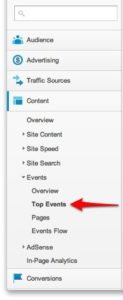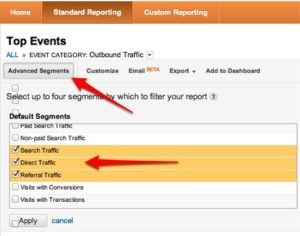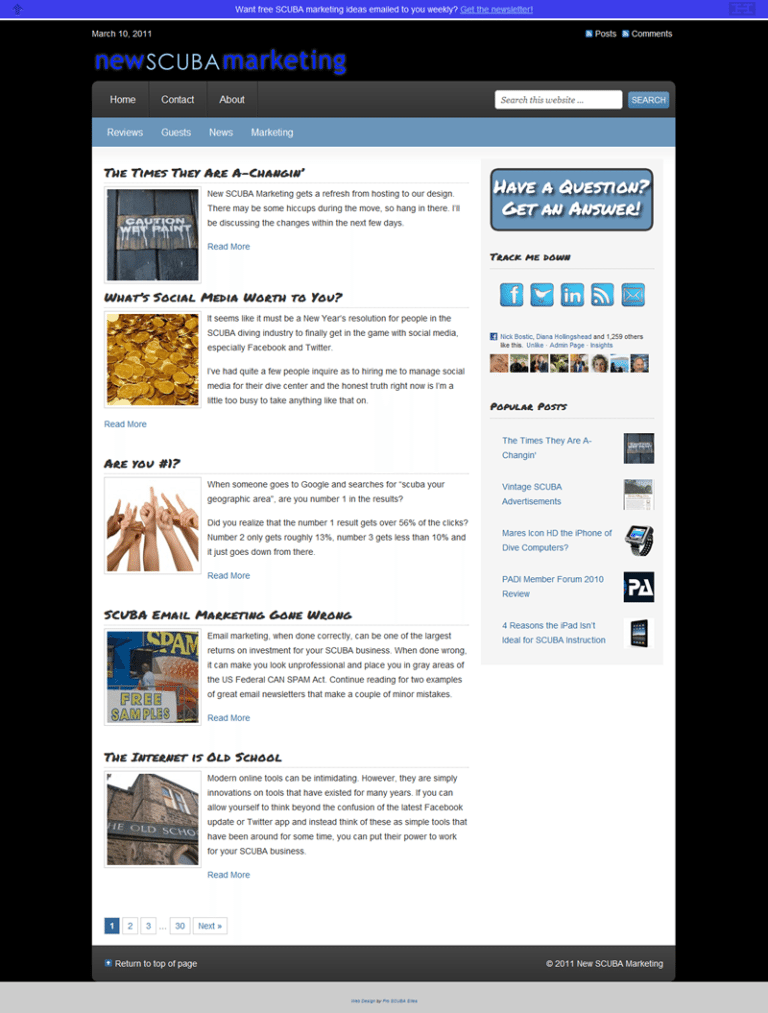What I Do: Data Analysis
I’ll be continuing with the Changes series soon, but I’ve recently had a few friends and family be confused at what I do. When I say, “I plan and manage the social media marketing for a SCUBA equipment retailer”, people make comments that I “play” on Facebook and Twitter all day. When I correct them and go into greater detail, they tend to glaze over. So now, I’ll direct them here to get an idea 🙂

Have a Goal for Your Dive Center Marketing
First, you need to determine your goal to see if your efforts are effective. In my case, the ultimate goal is to send people to the ecommerce site. We can discuss the merits of increasing brand awareness and providing customer service, but at the end of the day the lights are kept on by people buying from the store.
For your dive center it could be equipment sales/rental, class signups, trip bookings or any of a number of metrics depending on your focus.
Track Your Goals
I recommend using Google Analytics for your web site tracking. If you decide to use the SCUBA blogging system I’m using, it’s incredibly easy to setup. One of the benefits of using the system I use is that it works with Google Analytics to track your outbound clicks, not just clicks within your site. As an example, if you link out to gear manufacturers or dive destinations, you can see which ones your customers have the most interest in.
Dig Into Stats
I think it’s a throwback to my finance degree, but I love statistics. You don’t need a degree to follow along though, so don’t worry.
For me, sending traffic to a different website is my goal, so today I’m going to show you how to analyze these metrics. In another installment, I’ll show you how to track clicks to internal links.
In your Google Analytics, on the left side of the screen go to Content ->; Events ->; Top Events as shown here:
If you’re using the SCUBA blogging system I am, you should now have an Outbound Traffic event category in the main section of the screen. Click it. Now you should see a list of sites that people are clicking on when they leave your site.
Understanding Traffic Value
One way to look at this data is to see what your most popular links are, but for todays example we’re looking at where our visitors are coming from. Knowing where your ideal customers come from allows you to focus your efforts better on online marketing that provides the greatest value. If search traffic does well, focus on SEO. If Facebook traffic converts beautifully, focus there.
Click the Advanced Segments button near the top of the screen then check the boxes next to Search Traffic, Direct Traffic and Referral Traffic like this:
Now underneath each of your outbound links, you’ll see which source of traffic sent the most clicks.
Some definitions:
- Search Traffic: traffic that comes from people finding you via a search engine
- Direct Traffic: someone typing in your URL or clicking a saved bookmark to your site
- Referral Traffic: traffic from another source like Facebook, Twitter, Google+, etc
You May Be Surprised
With as much talk about how powerful social networks are for your business, the SCUBA blog I manage still generates almost 80% MORE traffic to the ecommerce site via people who arrive via search.
I’ve created several advanced segments (I’ll teach you how to do that another time), one of which is what I refer to as the Big 3 (Facebook, Twitter & Google+), the other is Social Bookmarks (StumbleUpon, Reddit, Imgur, Pinterest). Yes, there are more social bookmarking sites, but those are the ones that consistently send traffic.
While the social bookmarking sites send a considerable amount of site traffic, the Big 3 direct almost 95% MORE traffic back to the ecommerce site.
Your data may vary, but of all of my established sites, search traffic always dominates for conversions. This is because people who are searching specifically for my keywords are already inclined to want to buy my products. If someone searches for “PADI Open Water SCUBA certification Portland Oregon” and they click through to a site that offers just that, they’re highly likely to convert. If they click on a pretty picture of a dive they saw on Facebook and are taken to a page where they can book a course, they are less likely to buy.
In my experience with newer sites, referral traffic may outshine search traffic, but this is typically due to sites not ranking for enough high volume keywords. If you are focusing on “SCUBA diving Portland Oregon”, you’re targeting about 210 Google searches per month. If you’re targeting “dive equipment”, you’re targeting 110,000 Google searches per month. So “high volume” is relative.
What To Do With This Data
For me, the focus is on search engine optimization. It drives more traffic and that traffic is significantly higher quality. If I want to boost traffic numbers, I can easily drop some money into a Stumbleupon account. But when I look at metrics like time on site, pages per visit, bounce rate and most importantly their click-through to the ecommerce site, it’s wasted money.
You’re In Luck
For most dive centers, the focus is on local keywords like “SCUBA instruction Portland Oregon”. The more localized your search terms, the easier they are to rank. If you know nothing about search engine optimization, you’re also in luck because Google recently updated their algorithm to penalize sites that are “over optimized”. For a guy who has been doing search engine optimization for over 10 years, this has been a very interesting time.
I’m currently working on another big site at work in a completely different niche that caters to a global audience, so building rank has been…fun.
What I Do: Data Analysis Search Engine Optimization
Looking at the data, I’m now spending the vast majority of my time doing search engine optimization. I’m still doing the social media strategy/planning/optimization/posting/responding/engaging activities (with the help of my assistant), coding cool new tools and keeping the blogs updated and running, but SEO takes a lot of time these days. It’s not as enjoyable since it’s not interacting as much as social media work does, but it’s where the high quality traffic is. In the next installment of What I Do, I’ll go into search engine optimization a little. SEO is one area I don’t give away all of my secrets though 🙂






